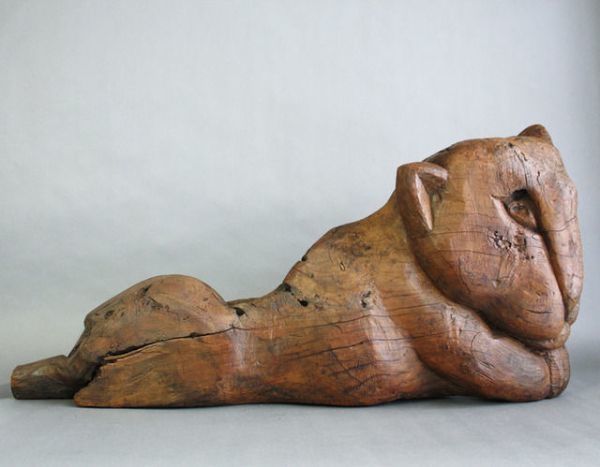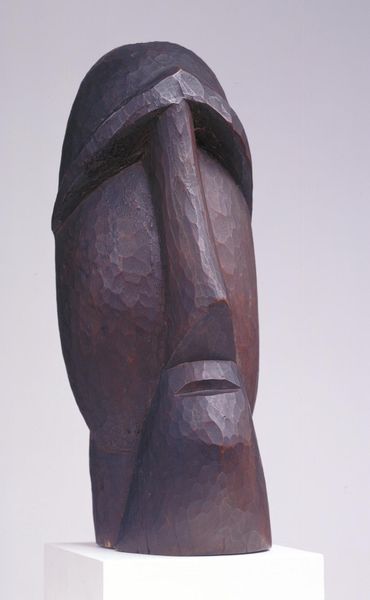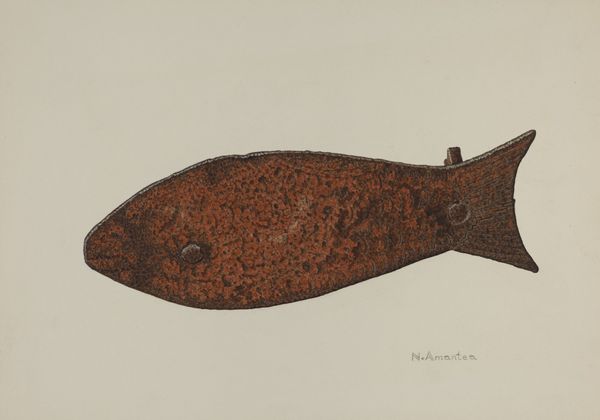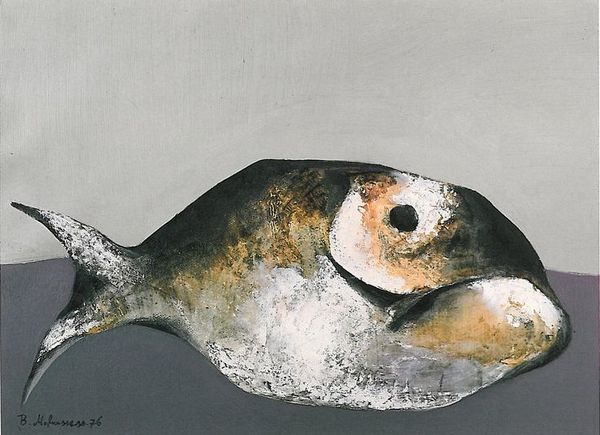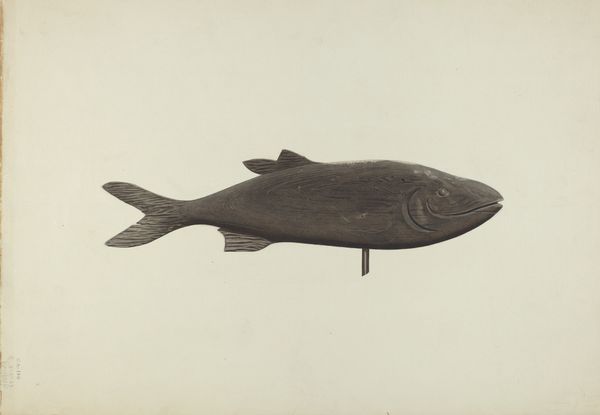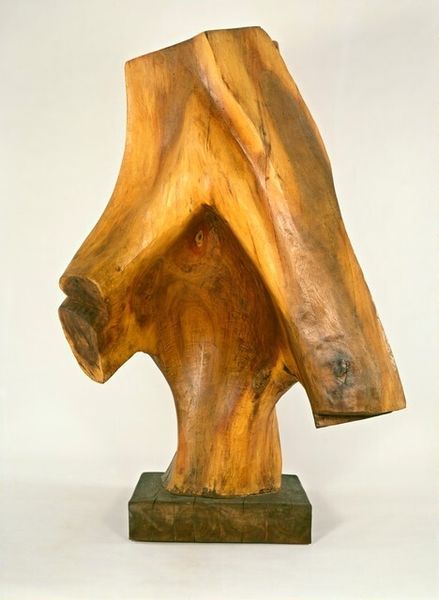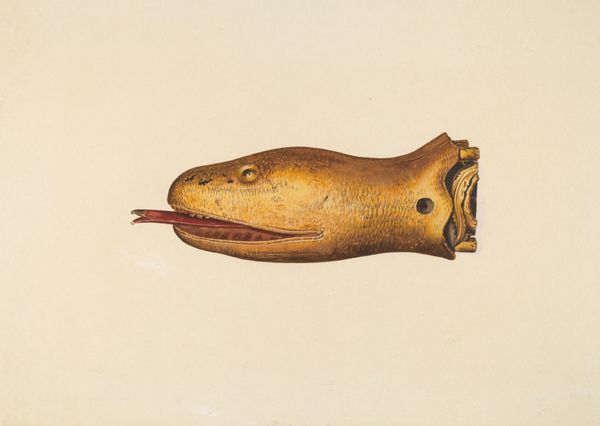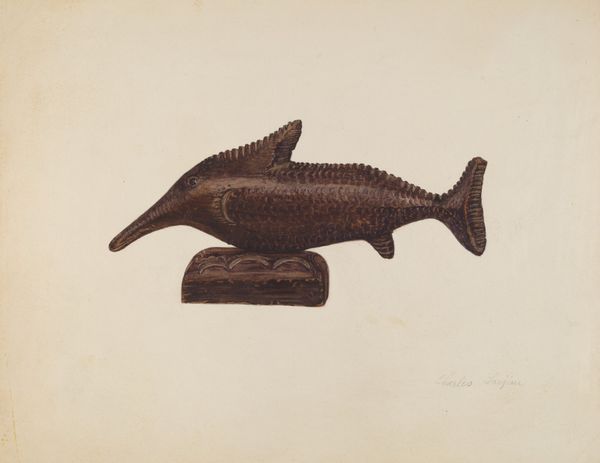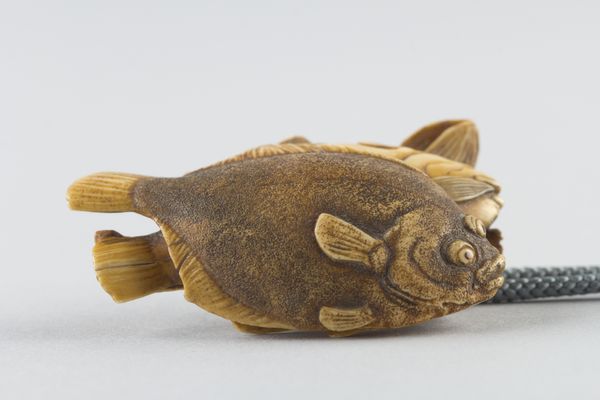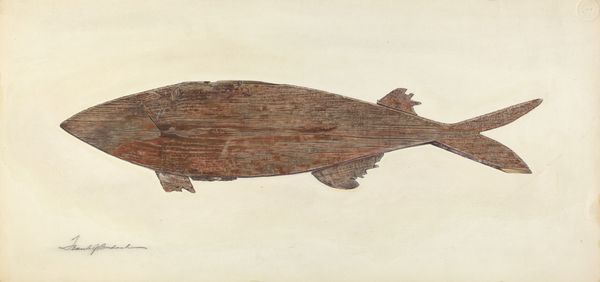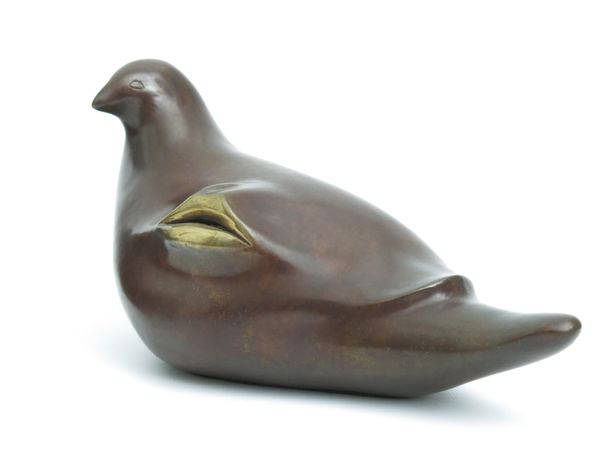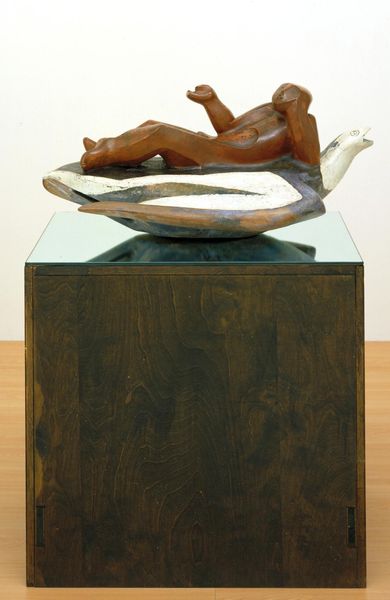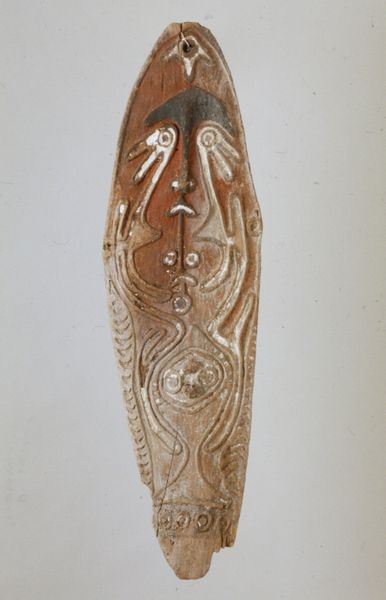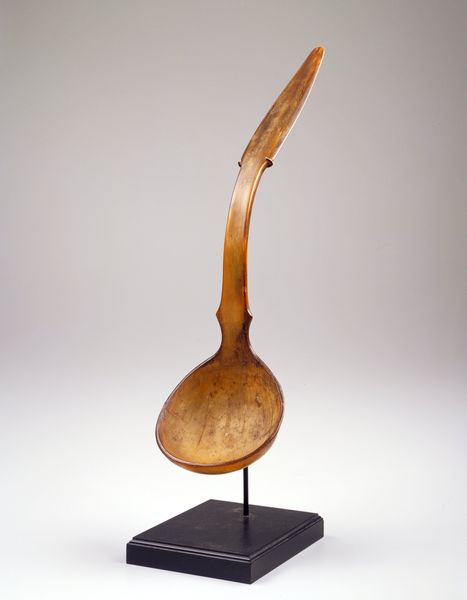
Dimensions: object: 144 x 274 x 41 mm, 2.1 kg
Copyright: © The estate of John Skeaping | CC-BY-NC-ND 4.0 DEED, Photo: Tate
Editor: We’re looking at John Skeaping's sculpture, "Fish," date unknown, housed at the Tate. The smooth, brown material gives it a tactile quality. What strikes you most about its form? Curator: The reductive nature of Skeaping's sculpture compels attention. Note the simplification of anatomical details: the eyes are mere circles, the fins suggested rather than delineated. How does this abstraction affect your understanding? Editor: It makes it feel more universal, less about one specific fish and more about the idea of a fish. Curator: Precisely. The artist prioritizes the essence of 'fishness' through form and material. The polished surface invites contemplation of volume and mass. What is your impression of how the sculpture plays with light? Editor: I see how the light glides over the curves, highlighting the shape. It's like the fish is swimming in light. Curator: Indeed. It reinforces the life-like quality, drawing the viewer into dialogue with the object. This elegant reduction and shaping demonstrates a masterful understanding of form. I will think differently about sculpture now.
Comments
Join the conversation
Join millions of artists and users on Artera today and experience the ultimate creative platform.
tate 7 months ago
⋮
John Skeaping and Alan Durst shared the enthusiasm for direct carving shown by Jacob Epstein’s Doves displayed on the plinth opposite. The carving of animals was particularly popular during this period because it was felt that they could be more easily abstracted than the human form. As shown by Skeaping’s Fish, carved from a large ironstone pebble, such works combine fine carving with sensitive handling of the material. Gallery label, August 2004
